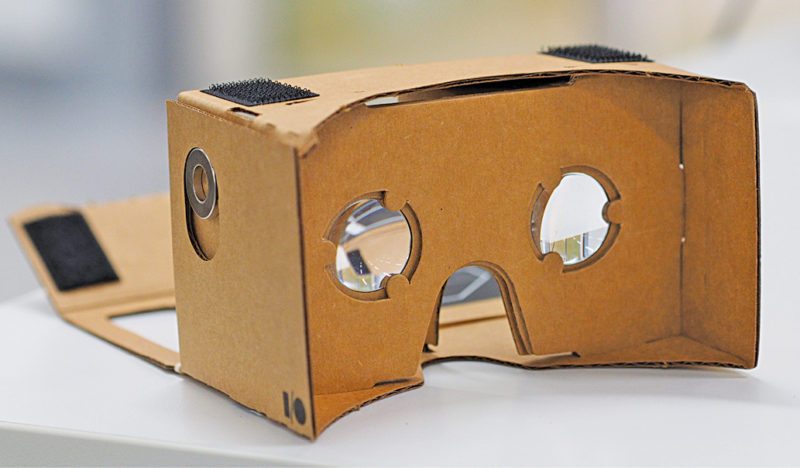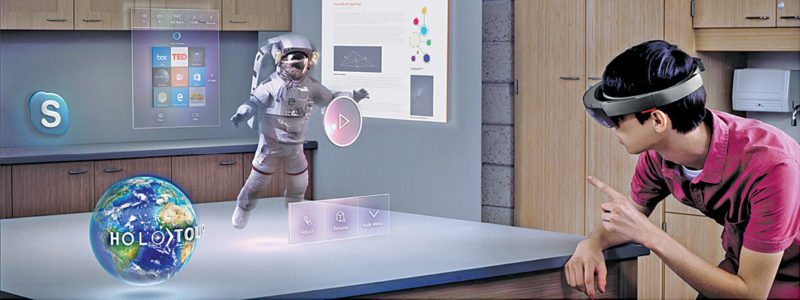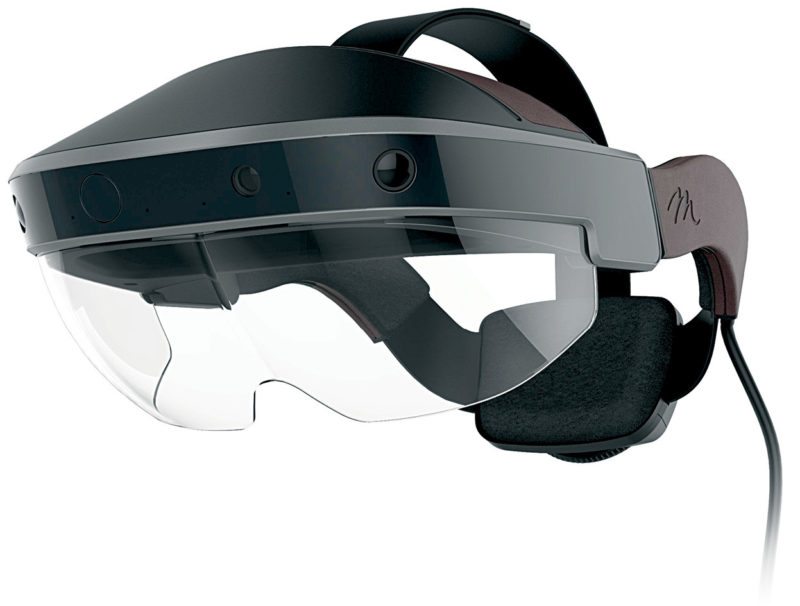Virtual reality (VR) allows experiences from a very different perspective than we are used to. According to a user, “You come to a place that is controllable and not defined by so many unknowns.”
Molly Fosco, in an article published on www.summit.com, explains her experience of summiting Everest as, “It is an immersive VR experience that makes you feel like you are actually climbing the highest mountain in the world.” The capability to transform your surroundings just by putting on a pair of goggles and headphones to escape into the new surroundings has seen a lot of changes over the past couple of years.
God at the top of the world.
Available for Oculus Rift and Touch and HTC Vive, Everest VR simulation is an immersive VR experience that has an intriguing feature added recently. The God mode allowed Fosco to shrink or grow to any size and to teleport to other spots in the mountain range. It is almost funny how, in a God-created world, man has created a world away from this world. However, being God comes with its own set of rules.

VR affecting health
As per a Google DayDream tester, the experience starts to get on your nerves after the initial half an hour. Sore eyes, tiredness, headaches, stiff necks and eye strain are some known side effects among long-term VR headset users. Taking this into consideration, an easily-ignored warning comes with the headset, which advises you to take a 10- to 15-minute break after about 30 minutes and not to use the device if there are any mental health issues. But as stated earlier, it is easily ignored.
Another common issue is reduction in multi-tasking capabilities post usage, which could lead to increased risk in the real world.
Researchers have also found cases of nausea and disorientation caused by the vergence-accommodation conflict. Presented at the Consumer Electronics Show (CES) earlier this year, Relief band has turned out to be a quick solution for gamers. The bracelet is worn on the underside of the wrist. It balances the pulses using neuro-modulation to treat motion sickness.
These problems might make VR look like a monster. But taken in moderation, it could be a great learning experience for a wide range of fields.
A ray of hope.
Doctors can move from cadavers to VR, for instance, and engineers could learn the basics of product development by performing in the virtual world. In both cases, there is no harm done, and beginners can make mistakes without any fear. King’s College Hospital in London is already using VR to make magnetic resonance imaging experience less scary for children.
Somewhere down the line, we could move from watching the news to living it via live streaming VR. VR is already advancing rapidly in gaming, and it is only natural to branch out to other fields.

Advancing standards of VR
As per reports, Everest VR experience uses more than 30,000 high-resolution photographs and creates a computer-generated 3D imagery model using Stereo photo-grammetry. It involves estimating the 3D coordinates of points on an object and employing measurements made in two or more photographic images taken from different positions.
The advertisements about VR do not do any justice to the capabilities of VR. The best way to appreciate is to experience it first hand, no holds barred. At least, the experience of hitting your head on the walls of your room while wearing the VR headset could be something you would remember for a long time.
If experiencing a whole different world that you might not be able to visit anytime soon was not incentive enough, VR is expected to help with peaceful sleep as well. Medical device maker Fisher Wallace is all set to improve VR experiences by manipulating chemicals inside the human brain. Kortex, a VR headset accessory for stress management, attaches to the VR headset strap and helps the brain in producing endorphins and serotonin for mood balance. It also helps lower stress hormone Cortisol and increases melatonin production for a good night’s sleep.
VR moving towards visual clarity and acuity.
Ever since the acquisition of Oculus by Facebook, VR has gained the much-needed impetus. Oculus Rift VR device, combined with the touch interface provided in the form of Oculus Touch, provides an experience to look forward to. Oculus Rift is user friendly, and it completely immerses you inside virtual worlds.
However, there are still some tracking glitches that need to be taken care of before the virtual world begins to feel like the real world. And the biggest problem of understanding the design of the real room and involving that into the virtual world is something to look out for. This could move more into the domain of augmented reality (AR), which seems to be developing at its own pace.
Aesthetic improvements with AR
Vuzix M-100 looks like something straight out of science fiction. Focussed towards enterprise, commercial and medical applications, the device comes with direct onboard processing with a wearable monocular display. A camera in the device captures and displays AR.
HoloLens from Microsoft is the first self-contained holographic computer that enables you to engage with your digital content and interact with holograms in the world around you.
HoloLens has numerous sensors to capture your actions and the environment. Sensors map the area around you and design the simulation accordingly. The lenses employ a projection system to generate multi-dimensional images. The brain of the device is the holographic processing unit that processes data from sensors and transmits it for projection accordingly. You do not need a separate pair of headphones.
K-Glass is a high-performance and ultra-low-power head-mounted display with a built-in augmented reality processor. It focuses on replicating the brain, while assessing your surroundings using a visual attention modem, which helps in categorising relevant and irrelevant data just like the human brain. It aims at providing relevant information to you.
A cited example is of a person walking by a restaurant and looking through the glasses to check whether the menu is to his liking or not, so that he may decide whether to go in or not.
Meta 2 launched by Meta Vision in 2014, enables you to create holographic apps, tools and experiences. According to a tester, “Objects in the field-of-view behave like things in the real world.” Priced at US$ 949, the experience is nothing short of a fantasy. It allows fantasy objects to be lifted and placed in different locations just like moving furniture around the house. You can also experience walking around a globe and seeing it from different angles. Though there seem to be some issues with gesture recognition, this could very well lead the way to some truly interesting experiences in the future.
Laster SeeThru, however, takes a different approach. The headset does not have a camera to avoid issues regarding invasion of privacy. It works on its own series of location and GPS to get things done. The device is targeted at adventure sports and helps in navigation. Available for US$ 399, the device connects with your mobile device to allow contacts access from phone, localisation and navigation.

And then we have the rumours.
Known for their quality of service and beauty of design, Apple is also expected to enter the VR market. As per a report by Bloomberg, they have gone on to discuss the project with their hardware suppliers and have ordered near-eye displays for internal testing.
Rumours also indicate that an Apple AR headset would connect to an iPhone. These go on to suggest that secret teams are working on iGlasses, which should hit the market sometime by 2018. If the quality of the current products from Apple is any consideration, the AR or VR device is expected to be a premium product.
However, one thing that sticks out is that, with VR or AR, need for displaying HD content is on the rise. So how are graphic processors keeping up?
What makes virtuality tick
Current headsets provide an updated view of the world every 11.1 milliseconds. Their graphic card effectively generates a frame rate of about 90fps. This calls for improving the frame rate and keeping up with the high frame rate requirements. If the next frame is not ready in time, the perspective is adjusted based on the trajectory to cover up for the lag. Asynchronous Space Warp is a frame-rate smoothing technique that almost halves the CPU/GPU time required to produce nearly the same output from the same content. It enables users to run Oculus Rift headsets on lower specification hardware. Asynchronous Space Warp Vive is quite helpful with low-end GPUs that are incapable of generating frames at the required speed.

The currently top-of-the-line GPUs include Strix GTX 10 series processors and RX 480. Strix GTX based on Nvidia’s Maxwell architecture has undergone quite a few improvements. GTX 1060, 1070 and 1080 are improvements over their earlier 9 series processors with improved VR performance. While the 9 series delivers decent experiences overall, the 10 series depends on time-warping for higher graphic demanding games. RX 480, based on the third-generation Graphics Core Next architecture from AMD, is another improvement over the earlier 390 series processors.
There has also been reduction in the requirements for VR. Last year saw the processing requirements of Rift reduce from Nvidia GTX 970 or AMD 290, Intel i5-4590 and 8GB RAM to i3-6100 CPU with GTX 960 GPU or AMD FX-4350 with Radeon RX 470. This has, however, been in large due to Asynchronous Space Warp. Looking purely at graphics processing, AMD Radeon RX480 remains the most cost-effective solution for VR experiences. It manages to generate about 62fps, whereas the alternative Nvidia’s GTX 1080 generates about 59fps. Looks like a long way to go for processors to hit the ideal 90fps mark!
The oxymoron goes on
Rumours or not, VR is a major focus area for manufacturers going ahead. Its popularity is evident from an experience I had last week. While travelling, I heard a knock on my car window. Thinking it would be another hawker selling stuff I did not need, I brushed him off. When the vehicle moved, the rear-view mirror showed a person holding three to four VR headset boxes. Those might have been knockoffs, but the idea that VR has reached the streets is heartening.
Saurabh Durgapal is working as technology journalist at EFY





